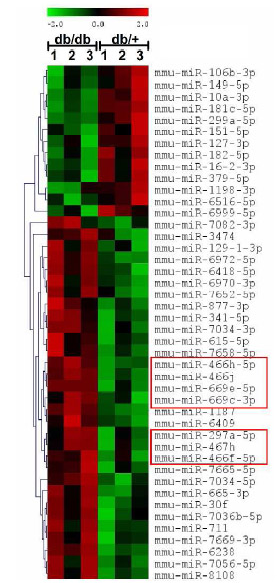Diabetic skin ulcers represent a challenging clinical problem with mechanisms not fully understood. In a recent study by researchers from Wayne State University, they investigated the role and mechanism for the primary Unfolded Protein Response (UPR) transducer inositol requiring enzyme 1 (IRE1α) in diabetic wound healing.
In their study, bone marrow-derived progenitor cells (BMPCs) were isolated from adult male type-2 diabetic and their littermate control mice. In diabetic BMPCs, IRE1α protein expression and phosphorylation were repressed. The impaired diabetic BMPC angiogenic function was rescued by adenovirus-mediated expression of IRE1α, but not by the RNase-inactive IRE1á or the activated X-box binding protein 1 (XBP1), the canonical IRE1á target. In fact, IRE1á RNase processes a subset of microRNAs (miRs), including miR-466 and miR-200 families, through which IRE1á plays an important role in maintaining BMPC function under the diabetic condition. IRE1á attenuated maturation of miR-466 and miR-200 family members at precursor miR levels through the Regulated IRE1α-Dependent Decay (RIDD) independent of XBP1. IRE1á deficiency in diabetes resulted in a burst of functional miRs from miR-466 and miR-200 families, which directly target and repress the mRNA encoding the angiogenic factor angiopoietin-1 (ANGPT1), leading to decreased ANGPT1 expression and disrupted angiogenesis. Importantly, cell therapies using IRE1α-expressing BMPCs or direct IRE1α gene transfer significantly accelerated cutaneous wound healing in diabetic mice through facilitating angiogenesis.
In conclusion, this study revealed a novel mechanistic basis for rescuing angiogenesis and tissue repair in diabetic wound treatments.
Heat map of miRNA microarray analysis in db/+ and db/db BMPCs. n=3 per group

Related Service
miRNA Microarray Service – LC Sciences provides a microRNA (miRNA) expression profiling service using microarrays based on our in-house developed µParaflo® technology platform. We have standard arrays for all mature miRNAs of all species available in the latest version of the miRBase database (Release 21, July 2014). Our service is comprehensive and includes sample labeling, array hybridization, image data processing and in-depth data analysis. Two-three weeks after receiving your total RNA samples, we’ll send you both the raw and fully analyzed data. [Learn more…]
Reference
J-M. Wang, Y. Qiu, Z-Q. Yang, L. Li, K. Zhang (2016) Inositol Requiring Enzyme 1 Facilitates Diabetic Wound Healing through Modulating microRNAs Diabetes 6(10) doi: 10.2337/db16-0052 [article]
